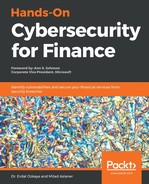Here are some terms related to the cybersecurity world:
- Cybercrime: Any crime that involves the use of a computer as the object of a crime or as an accessory used to commit a crime. The perpetrators of such a crime are known as cyber criminals. They mostly use computer technology to illegally access sensitive information, scam, or carry out malicious actions.
- Ransomware: Malware built to extort money from victims by blocking access to their computers and files until they pay a ransom amount. However, the payment of the ransom is never a guarantee of file recovery.
- Malware: Malicious software. There are three categories of malware: viruses, worms, and Trojans. These are used to either allow unauthorized access or to damage computers.
- Social engineering: An attack technique that is increasingly being used by cyber criminals to manipulate people into revealing some information or carrying out some actions. The end goal is either monetary gain or access to sensitive information, such as business secrets.
- Phishing: A common exploitation attack that involves sending fraudulent emails, that claim to be from reputable sources, to users. Phishers aim to get sensitive data or money from their targets. With advancements in technology, phishing attacks are becoming more sophisticated and advanced, and thus more successful.
- Botnet: A network of zombie devices that have been infected with malware to make them perform certain tasks, such as denial of service attacks. Personal computers were once key targets for recruitment in botnets, but since the introduction of IoT devices, hackers have been shifting focus to this largely insecure technology. A particularly dreadful botnet is the Mirai botnet, which is made up of IoT devices and has been used in several attacks.
- Data breach: A corporate network is attacked by cyber criminals and some valuable data is stolen. In many cases, customer authentication details, addresses, and their financial information is stolen. Stolen data is valuable and can be sold in black markets or ransomed. Even when the stolen data is encrypted, hackers can find ways to decrypt it, especially if the encryption algorithm was weak.
- DDoS attack: Attackers target a machine with an overwhelming number of requests, thus clogging its bandwidth and ability to respond to legitimate requests. DDoS attacks are carried out by botnets, which have been discussed previously. DDoS attacks can be used as a diversion technique where hackers cause security personnel to focus their efforts on recovering from the DDoS attack while another attack is taking place.
- Spyware: Malware used to spy on people for the purposes of obtaining their personal information, login credentials, or other sensitive information. They mostly infect browsers or come hidden in apps and programs. For mobile devices, malware can use GPS sensors to communicate back the whereabouts of a user's device, and they can also access the call history and SMS.
